THE FUTURE SERIES
Article 3 of 6
The Future of Fashion Design
This is the 3rd in a series of six blogs that explores the changing landscape of the fashion industry and the evolution of various functions and stakeholders in it. In this article, I have discussed the evolving role of fashion design.
In this article, ‘design’ refers to commercial fashion design for brand/retail and not couture.
To begin with, we will first discuss
- my recommendation on brand categorisation and its use in creating effective and relevant design team structure,
- then how to build competencies based on product strategy,
- go beyond the concept of seasons,
- move to managing multiple calendars and
- finally evolve to a digital-first world.
- To conclude I will also talk about how this impacts the day to day life of a designer.
Before moving ahead we should revisit how I have defined the words ‘Fashion’ and ‘Trend’ differently here; but for quick reference fashion refers to the brands ability to dictate what to wear and trends is about evolving consumer taste which gains mass appeal.
I work on a very simple categorisation of brands, which I am sharing here.
How to Categorise Brands for this new emerging market?
As we saw in the previous article, brands no longer impact or set trends, the way they used to in the 80’s, 90’s and the early 2000’s. So, based on this, I have redefined how we could classify brands. Simply put there are three variants:
Trend Makers - Consumers look upto these brands for setting new trends/fashion
Trend Experimenters - Brands that constantly experiment with new trends & bring them to the larger consumer base
Trend Adopters - Brands that replicate & mass manufacture the trends, making it available to one and all
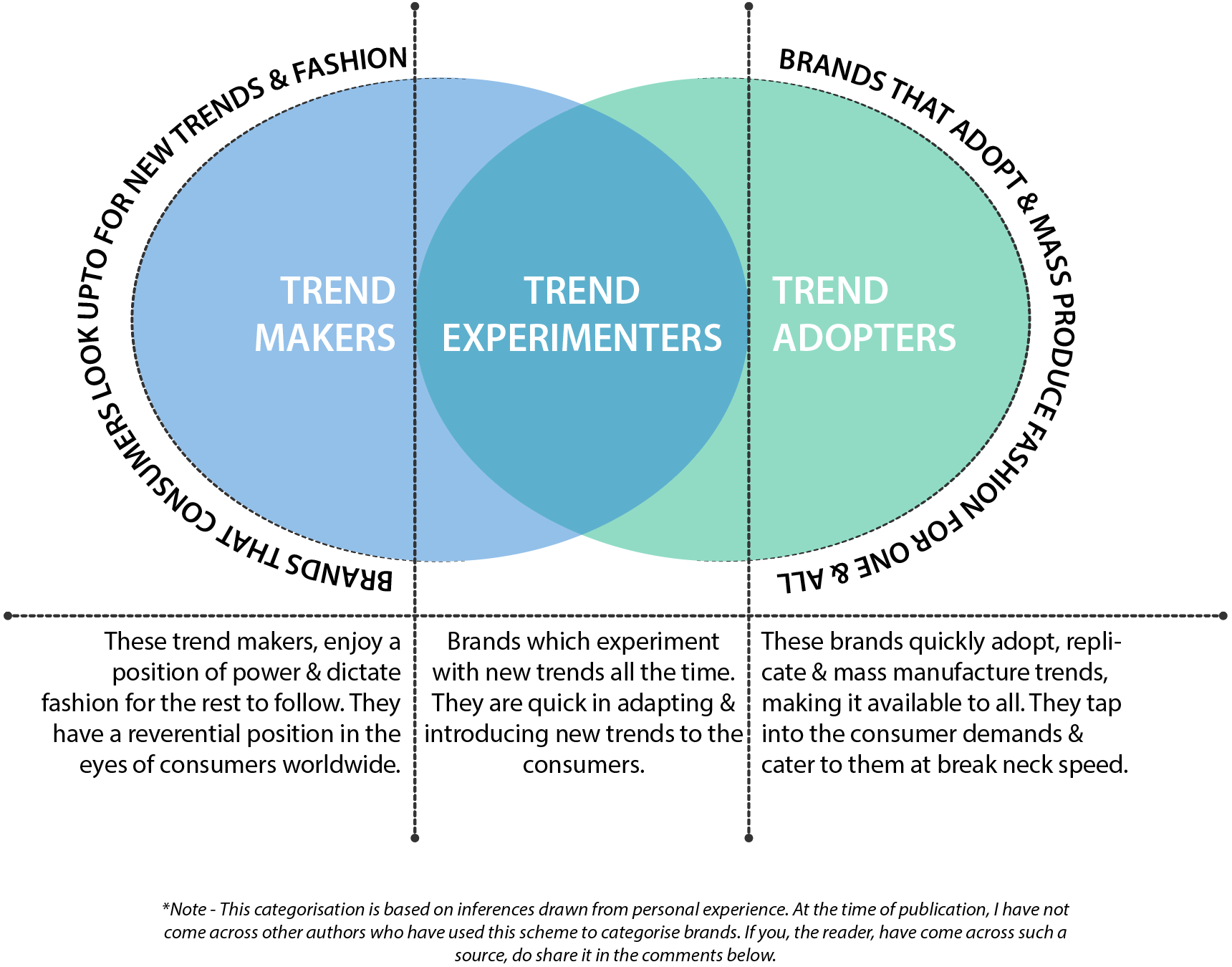
Having defined the business segment, we now move on to how we should structure our design teams to ge the best value for the business.
Structure design teams differently to manage different business segments
I have always maintained that design teams should be structured differently for different business models. What works for a Trend maker will not work for a trend adopter following trends.
A properly structured team can be of immense value to business, so to attach designers in a scattered manner to some buying teams - as is the case in many companies, may also not be a desirable solution.
The role of Design should change from Forecasting to Innovation to Trend-spotting, based on the category of brand. However, there is something of these elements in each category of brands - just in varying degrees based on how their brand is positioned, as given in the infographic below.
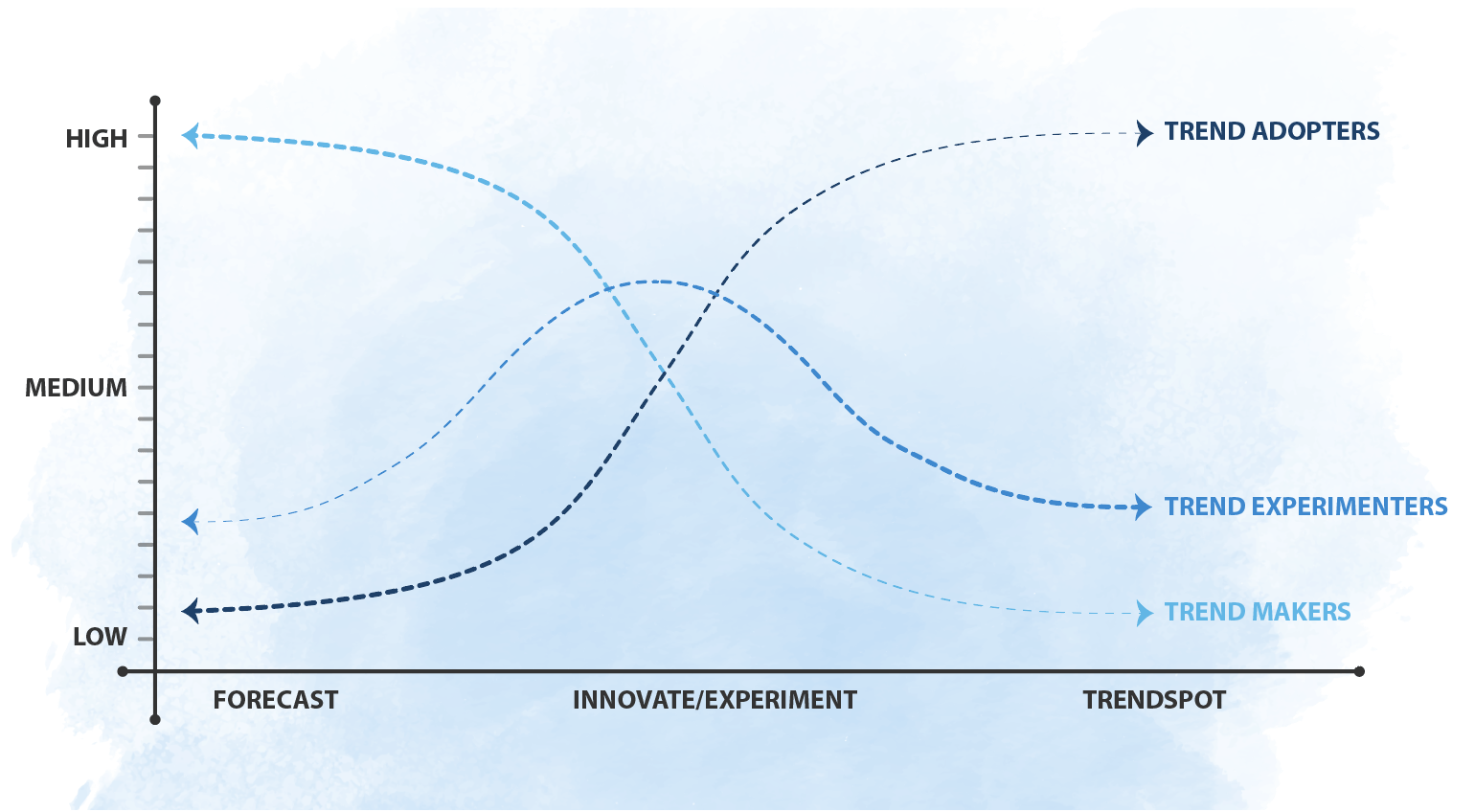
In India, the role of the design teams and how they should be structured, is not well understood. I cannot stress enough, how structuring a design team properly can greatly enhance reaction time and speed to market, thus enhancing business value many times over.
Here are two important aspects I want to point out:
- In brands, where trend-spotting and quick response is important, I always feel that it is better to have two verticals within the design team, (a).the classical design team, that forecasts fashion, manages brand salience, gives direction and creates designs and (b). curates and manages co-create with other partners to ensure quick response to market.
- Brands need to structure design teams in a way that works best for them. But across the world today Design teams are being moved to a more disaggregated way of working. Many category specialist design teams are being relocated to factories. In some cases, vendors are being asked to set up design teams to support the Brands. This allows for flexibility and faster speed to market.
Now let’s understand product strategy and how to build capabilities around it for effectiveness.
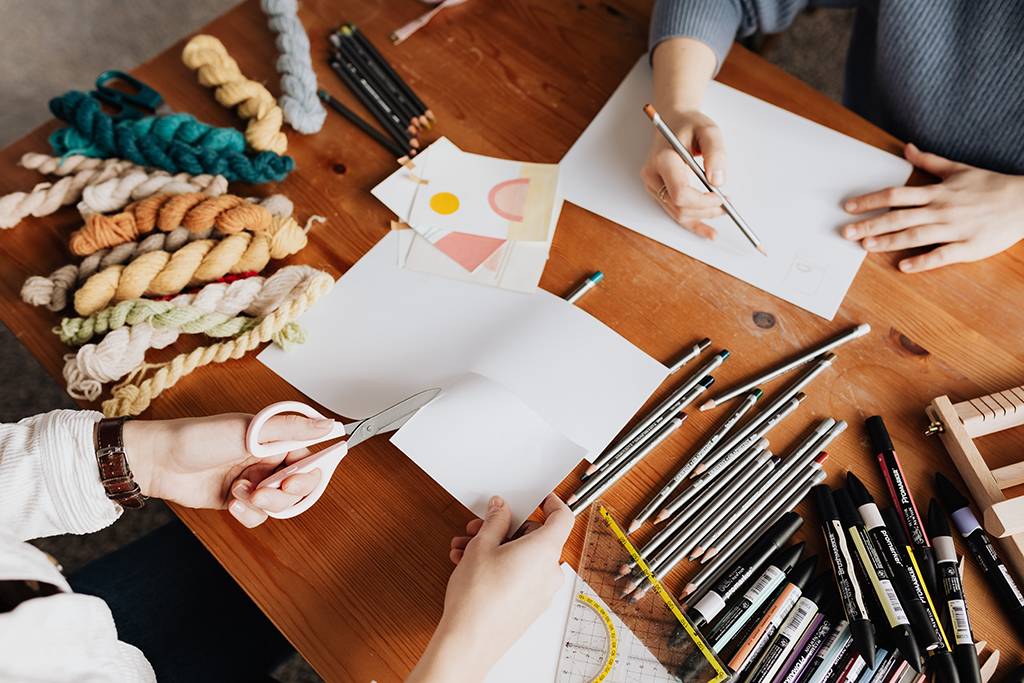
Build design & innovation capabilities based on product strategy
Typically design and innovation capabilities should be built on the basis of the following principle.
- Dominate - What we are known for
- Excel - What we are good at
- Manage - Where we are present
And the way to build capability is to ensure total control on the Dominate Category, get the best talent, support with investment in innovation and market it well. Then have an adequate play between create and curate for the Excel Category. And finally handle the Manage Category through collaboration with partners.
Brands should own the direction and the selection of products going into their lines - but is it necessary to create everything by oneself?
Having large design teams slows down the reaction time to market and obsessing over originality can prove very expensive in terms of time lost - particularly when one can be original through smart curation.
Move from Season to Go-to-Market cycles
The myth of seasonal planning and launches has been bust. Seasons used to be about getting the consumer to refresh their wardrobes ensuring higher buys. Now, the consumer has moved to buying whenever they want; with promotions going round the year - brands need to plan their go-to-market cycles more frequently and design teams need to align to this.
The challenge here is to maintain the homogeneity and look and feel of the brand, with multiple drops, curation and ensure that the consumer feels at home even with such frequent launch cycles.
Have different calendars for different categories and channels
Go to market cycles can and should be different for different categories based on their lead times and for various channels based on their requirements to re-fresh. Which would then mean a different calendar say for jeans as against one for say graphic tee’s and so on.
This means splitting the product line into multiple calendars with different go-to-market deadlines and cycles. This can exponentially increase response time to market, if managed with rigour.
And now, let’s talk about the most fundamental change taking place in design.
Design is moving into the 3rd Dimension
3D is the defining change in the tech side on design. This will ease visualisation by internal teams and customers, virtualising the sampling, fit testing and speeding up the complete process of concept to shelf.
Virtual roadshow’s, testing design on controlled social media, allowing selection through voting, will not only reduce development cycles, it will be the single most powerful tool in reducing sampling spends and enabling speed to market.

Conclusion
I will summarise what the above points mentioned from a 30k height perspective would mean for the designers in day to day working.
1. Research has a new meaning. Designers have to expand their horizons beyond forecasting agencies. They have to look at unconventional resources like social media, streaming platforms, politics, sports, everything ignites a trend these days.
2. Aquire new skill sets. 3D softwares, virtual draping softwares, virtual fittings on 3d models, virtual fashion shows, virtual roadshows, online visual merchandising to name a few.
3. Change in team structuring. One person can not do it all. Apart from creators and curators, specialists in 3D softwares may also be needed.
4. Change in Processes, prioritisation. Relook at how tech packs are created? Do we have the time to follow conventional methods? With virtual coming to the forefront, hand and feel may lose priority. What one sees is what sells. Designers need to keep this in mind. With consumers also shifting to online buying, the optics of the product have higher relevance.
5. Commercial calls. We no longer have the time to obsess over smaller details. The bigger picture has to be given more importance. A not so right product at right time will make more money than a perfect product at the wrong time. Once the trend is obsolete, the merchandise is wasted. It does not matter if it matches the Pantone perfectly.
6. Work on smaller, closer to market ranges and manage multiple calendars instead of working on one big seasonal launch. Create & curate small collections which tie into larger stories.
7. Behavioural changes required. Start managing relationships with vendors. Become educators who are able to guide vendors in understanding the brand handwriting and ethos. Designers need to think out of the box, not just design but also in processes.
Please share your thoughts in the comments section below to make this discussion more interesting.
RELATED TOPICS:#Apparel,Fashion,Fashion Design,Anindya,Fashion Strategy,Product Strategy,Design Team Structure,Future of Fashion,Fashion Lifestyle,Brand Categorisation,Trend Maker,Trend Adopter,Anindya Ray
Leave a comment
Our email address will not be published. Required fields are marked *



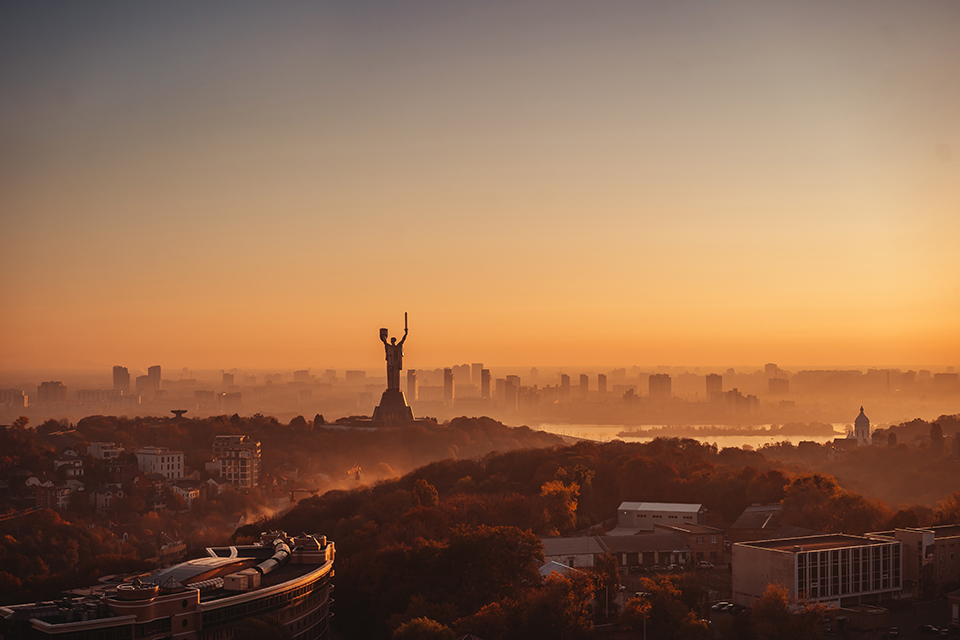
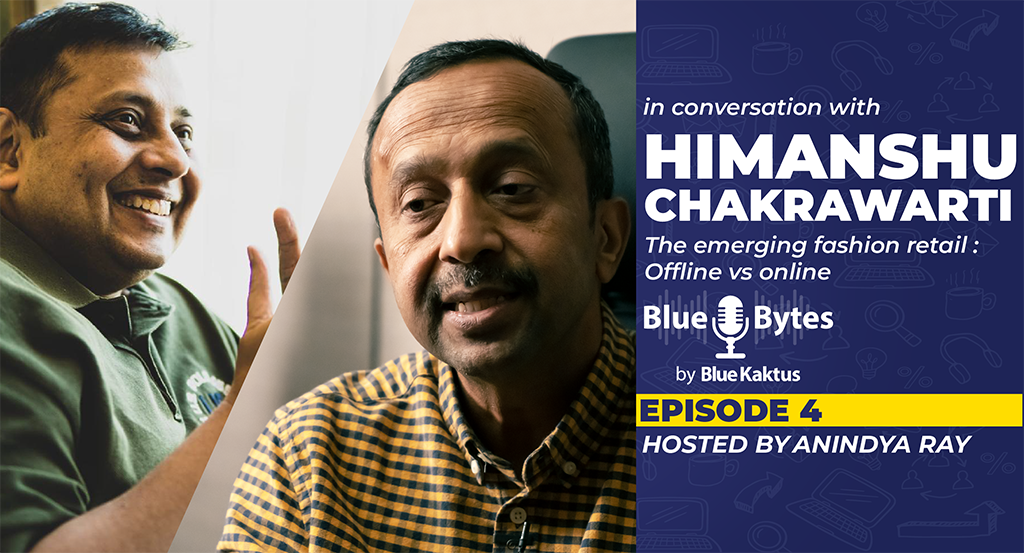
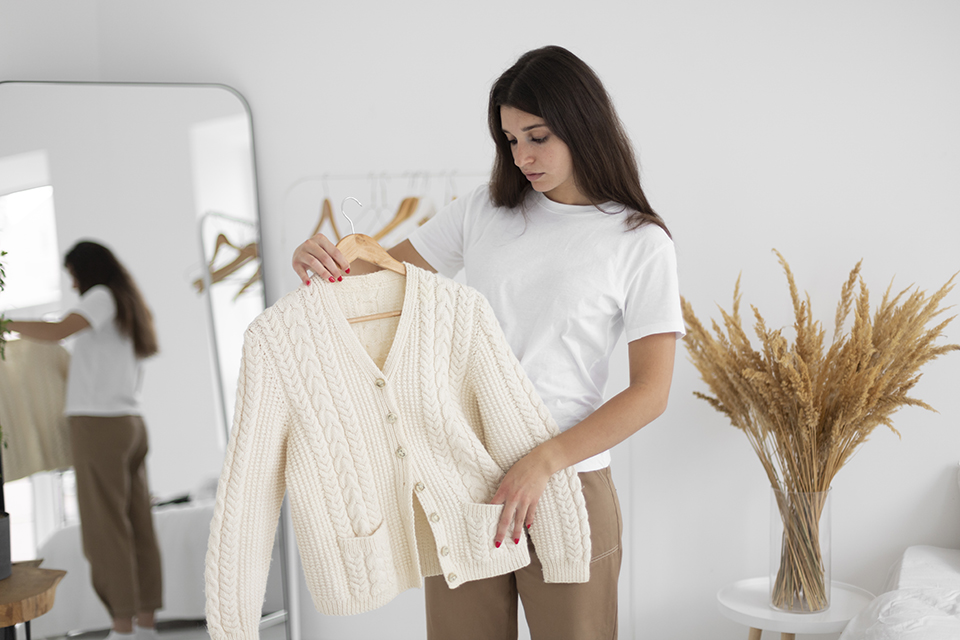

18 Comments
Natalie SchwabApr 04, 2024 at 04:33 am
Hey there, I'm Natalie from Social Buzzzy , your guide in the exciting world of Instagram growth. I've unearthed something phenomenal for skyrocketing your Instagram profile and I'm thrilled to share it with you! Social Growth Engine brings to you a revolutionary service that propels your Instagram engagement to new heights. It's seamless: - Focus on crafting stellar content. - Extremely cost-effective at a mere $36/month. - Completely safe (no password needed), highly efficient, and Instagram's best friend. I've witnessed extraordinary results firsthand, and I'm sure you will too! Elevate your Instagram presence right now: http://get.socialbuzzzy.com/instagram_booster To your success, Your ally Natalie
Natalie GrecoMar 17, 2024 at 01:27 am
Hi there, Natalie from Social Buzzzy , your ally in the exciting world of Instagram growth. I've unearthed something extraordinary for skyrocketing your Instagram profile and I'm thrilled to share it with you! Social Growth Engine unveils a pioneering service that catapults your Instagram engagement to new heights. It's seamless: - Focus on producing captivating content. - Extremely budget-friendly at just $36/month. - Completely safe (no password needed), incredibly powerful, and tailor-made for Instagram. I've experienced remarkable results firsthand, and I'm sure you will too! Amplify your Instagram presence this instant: http://get.socialbuzzzy.com/instagram_booster Warm regards, Your ally Natalie
Ranjith NandhiAug 17, 2020 at 16:31 pm
Hi Anindya sir ...amazing explanation on the future of Design ....I feel the explanation is not just for fashion its very much relevant for other product creating industries as well ..from clothing to technology every industry has product makers / product experimenters / product adopters which refers to trends in fashion . I Agree with Moutushi Dey's views on the what she has mentioned but I differ on what it has been to the team which has worked with her ...I have worked in the fashion adopters business with her but we had never shied away in trying to be trend makers and I feel we had been successful during that tenure . We had received accolades by Trend adopters saying that we have been up to the trend .... We have been creating new and innovative products in a smaller scale which has helped the whole team today to dive in and create new consumer centric innovative products and given the confidence that we can work anywhere in the world with the knowledge which we had acquired with her and you . Amazing insight in the blog ... NECESSITY > RESEARCH > PRODUCT > USAGE > MASS PRODUCTION. Thanks, Ranjith
Rupa GianiJul 23, 2020 at 00:11 am
The brand variants you’ve mentioned are so relevant and much more up to date for today’s day and age. In my experience, curation can prove to be quite a disaster sometimes as the brand signature (however smart and experienced you may be as a buyer/designer) will most definitely become scattered and homogeneity within the range is diluted .This never escapes the customer as they see glimpses of other brand products which are mostly of previous seasons. The fact that the base of curated products are products already in the market either with the vendors or from market buys, mostly results in these coming across as lookalikes / not the latest fashion for an aware consumer.They begin to view the brand as a mix match of various brands which can result in a lot of bad publicity which is very difficult to then amend in the mind of a loyal customer. For brands with extremely expensive products this popularly growing practice, best be avoided. It works best in scenarios really only when specific categories require huge number of options and the product while presented to customers are not collection driven. So for online portals this makes a lot of sense but not brands that are having loyal customer base offline due to a certain brand signature. In my opinion curation with vendor design support teams is something that is not explored enough by core team designers. Especially in the case of Indian vendors(Not talking about vendors who also do exports here). This is definitely a great asset when it comes to foreign vendors. If this would be looked into and their teams also be groomed, it would save even more lead time. I can’t agree more with you that Go to market cycles definitely should be lead time and channel requirement based. For designers- retail/clothing/fashion , it is now very important to be a virtual designer in every sense. Virtual being the keyword here. My little experience with entrepreneurship has totally reinforced this. Traditional methods of working definitely need to be thrown out of the window and new design practices have to be adapted.Its now or never as the customer in the coming future is online. Virtual designing/representation/roadshows/marketing needs to be the strongest asset of any brand's design team I can’t stress more on that or they will definitely die out.
RayanindyablogsJul 23, 2020 at 11:39 am
Wow! Rupa, wonderful insights. I completely agree. And yes companies need to properly train their teams and set processes - which will allow seamless curation. Very well articulated.
Neeraj KatochJul 03, 2020 at 18:17 pm
Hi Anindya, I have a different outlook on this article and would like to use the platform to share it. I think Designers should always have a free hand to try whatever they put them on, because the inception of an idea comes to life through their creativity. Designers are storytellers, the world is their playground. They should be allowed to explore and create magic out of it. They are the ones who identify and connect with the mood of the world, some one mentioned to me once “Camo print came into fashion when the mood of the world was war” I honestly don’t know if that was true, but it felt right, likewise even when the most glamorous looking women around the world, who wore bling at some point switched their moods to becoming lazy & comfortable, we saw a paradigmatic shift to sneakers and sweatpants. Expecting designers to understand the economics of the business may not be the right thing to do. In my opinion It would limit their creativity The designers space is a private one and that’s where their sanctity is. As Business leaders we have to identify their story and use other resources in our supply chain to bring it to life. I also believe that every designer must be able to create of their own and should not lean towards popular demand. In my experience with the Indian Fashion Retail, I think designers are not creating, instead curating (Collecting) fashion/trend. I’d rather not call them designers. Designers should travel, see the world with their naked eyes, feel, absorb, understand, assimilate, create something new. Indian Fashion Retail has a long way to go, our designers need to think global, India even today does not own a brand that is a global sensation & we need to ask ourselves why ?
RayanindyablogsJul 04, 2020 at 11:14 am
It's good to have a different point of view Neeraj. And I must thank you for sharing it. A lot of designers and other stakeholders in the Industry have a similar view. In fact, I was planning to discuss this in a future blog. But now is as good a time as any. The fundamental question here is on whether Fashion Design is a Fine Art or Commercial Art. And if that aspect is understood - it should answer the question. As mentioned on the beginning of the article, I said that for the purpose of this article Design will refer to commercial design for fashion companies/brands. So to re-look at some of these points in the article from your viewpoint, I would say:
- Designers (in commercial fashion/retail brands) should continue to pursue their creative endeavours but with a purpose in mind and if you are working for a business, the designer needs to work in a different way and add on these skills.
- Designers can go beyond what they are doing and evolve into better designers by understanding the business model. That will help them move to other roles through their career as well.
- If designers are working in couture and boutique kind of businesses they should make art and sell that and price it after creating it and be like Warhol and indie artists .....but companies work in a different way and need practical minds to lead the aesthetic and technical aspect of the products and design it based on that. Through curation if necessary.
- As per Wikipedia, the design/designer usually has to satisfy certain goals within certain constraints, may take into account aesthetic, functional, economic, or socio-political considerations, and is expected to interact with a certain environment. In other fields, some major examples of designs include architectural blueprints, engineering drawings, business processes, circuit diagrams, and sewing patterns.
- If I need a cheap shelf for a moderate household and I am a designer who just wants to express that platinum is beautiful and making shelves in platinum is my calling and it is the highest form of creative expression etc etc ...will my consumer be able to afford it?
- We are not talking about artists here ...we are talking about commercial designers who are part of business.They may or may not be creating original work but they are working through a process and designing it or re-engineering it to the best possible way. Yes and curation is being done because when the circumstances and business needs it and when there is no time, one needs to curate. A great example of curation in brands is Zara, a substantial part of their model is based on this.
But this article is purely focussed on further empowering the designer, enhance their skill set and rethink the way they work ...and that does not mean restricting their creative streak or intent or whatever ...they are most welcome to intelligently use that skill alongside these new ways of working. This is an extremely interesting conversation. Would request other readers to also chip in and comment. Would invite more discussion on this.Neeraj KatochJul 09, 2020 at 10:28 am
Hello Anindya ! Thank you for taking out the time and explaining this to me, it’s very well explained and written, it sheds a light on a lot of perspectives, you’ve touched base on every point. You’ve Sold the idea to me !
Poonam Sood LalJul 01, 2020 at 23:08 pm
i would like to throw in another perspective The world has changed int he last 3 months .Business have had too reinvent themselves Apparel and apparel design is also going to have to reinvent itself if it needs to survive We alll need to move very fast if we want our businesses to survive . people are making choices with their disposable income Gone are the days of Ramp designs or of formal suits.Lets study what's actually happening around us . Design is going to be driven by sales as business scramble to survive .Whats actually selling around us -lets take a page out from around the world .The highest sales are in masks and PPEs every brand including a burberry has designed their own brand masks .Then comes comfort clothing ,then lounge wear, yoga wear and kids clothing of course is selling .From a design perspective it means that even if i run a high fashion brand i must somehow bring these into my range if the business has to survive . So what stops our designers from doing fashionable PPEs if that's what people want to wear What stops them from designing a range of functional branded masks priced so everyone can buy ?(i find everyone designing them without technical input--(-no filter of melt blown ) What's stops them from doing a lounge range What stops them from doing a Yoga or exercise from home range What stops a business from pushing its core and betting more on that area instead of fashion ? The customer is going to find it very difficult to enter a store for the next one year or so . How does the business sell ?? What stops us from developing a 3D app where the customer can load the garment onto his own body What stops the business from having 3 D mirrors in their store where a customer can hold a garment in front of them and it can get projected to the body Why are we all not thinking out of the box ? It is pointless right now to design a regular range in the way we knew it in the pre covid time .We have to move with where the world has moved .The businesses which don't move will collapse
RayanindyablogsJul 04, 2020 at 10:40 am
That's a very interesting view point Poonam. You are asking some very pertinent questions. The winners in today's markets are going to be companies who read the market and adapt to it quickly. Very well taken as usual.
Sanjay LalJun 29, 2020 at 11:06 am
Think what you are trying to explain in your blog, "Design refers to commercial fashion design for brand / retail and not couture" is a reference towards The need for Clothing Designer & not a Fashion Designer as I may get it. Just for the benefit according to my thinking Fashion designers and clothing designers have a similar overarching objective: They create wearable clothing items. However, key differences exist between the two professions. Traditionally, clothing designers create practical, useful, everyday - sometimes upscale, often utilitarian - types of apparel. On the other hand, fashion designers, are known for creating wearable work of art. Clothing designers work towards more practical side of the fashion world. Please pardon me, I am not saying that the clothing designers are any bit less creative or talented than fashion designers, they simply have a different objective with their work. Clothing designers often focus on areas related to the following by: Conforming to the brand identity of clothing manufacturers. Creating affordable looks that fit the budget of a mainstream consumer population. Utilizing design materials that are both durable and attractive. Taking all body types into consideration with design features. Creating designs that are suitable for mass production. When it comes to the topic of clothing design, there is often debate surrounding the definition of trends, fads and classic designs. While much is in the eye of the beholder, there are a few basic things to consider, including the differences between fashion and trend. Trends are styles that are mainstream today. They may be inspired by a celebrity, a movie or by a collective move toward a specific fashion element. Fashion trends tend to come and go; they're hot and popular, then they fade away, but some are known to make comebacks in future generations. Fads are more short-lived than trends and are usually considered flashes-in-the-pan. Fashion fads are often highly unusual or unconventional and simply do not make sense in the long-term. Classic is a term used to describe fashion that never goes out of style. Classic clothing items might change or evolve over time but remain traditional staples of a wardrobe. Now what is Style? Style is simply a term used to describe individual preferences and choices for personal expression. Some terms - which inevitably evolve over time - are ascribed to styles, but they are as unique as the individuals who select them. Here are a few common genres. Fashion and clothing designers of all walks of life are each artists in their own right. The need for well-made quality clothing - both affordable and luxury - will never go out of style.
RayanindyablogsJun 29, 2020 at 13:35 pm
Very interesting insights Sanjay. As usual, you take the discussion to another level. The concept of 'Clothing Designer' vs. 'Fashion Designer' is really interesting. It's worth a deep dive in a separate blog. In fact it correlates with what may be called 'commercial design' vs. 'fine art'. Definitely a topic to explore. Trends, Fads and Classics - is something I will somewhat discuss in the next blog, but also deserves a separate blog. Thanks for making this so interesting.
Shilpa PolavarapuJun 28, 2020 at 19:33 pm
It's great to see an article which clearly talks about designers & their changing roles. With the evolving business dynamics, we designers also need to adapt and evolve. The brand segmentation is uniquely insightful & helps us understand what needs to be done & how it should be done. Having worked in brands which are trend adopters, I realise how curation would have helped the design team create a larger impact on the overall business. It would have made us react faster to demands & circumvent the processes to make the product available "now" rather than "tomorrow" Curation will surely come with its set of questions. Do we have the skill sets?, Do we have the vendor base with good design facilities? Will the final range look cohesive?.... What will be the sop's?.. What are roles played by the stakeholders? I believe, ensuring we have these questions answered is the key to seeing design teams transform for the good. The second aspect which entices me is the future readiness of designers. 3D is here & it's here to stay. Like it or not, we designers will have to adapt to this new way of working. It will not only change how we render the products, but the whole process we follow. We will have to look at ourselves as process disruptors & not just as designers & creators. This article surely leaves me with the question, Are we future ready? In my view we are a long way from there, but we will get there soon!
RayanindyablogsJun 29, 2020 at 13:42 pm
Very interesting points Shilpa. You are absolutely right. Curation should not be taken lightly. It needs very detailed planning to be effective. I do hope design teams will consider these in their future planning. Thanks for enriching this conversation, you should comment more often.
Rajesh kumarJun 27, 2020 at 23:59 pm
Good to see some discussion initiated on the role of Designers in the apparel industry. I do agree with your design team structure of Dominate, Excel, and Manage. Designing digitally is the need of the hour. But somehow I am not convinced of using a designer's creative time in doing clerical work as 3D rendering solves cataloging and physical roadshow problems especially in this COVID era, but it in no way it solves a creative problem except better visualization. In my experience, India and the Indian Brand & retail industry have a long way to go and learn how to use Designers' effectively. Designs are still being done in a very rudimentary manner in most of the companies. I guess we are yet to learn to look at design as a process and a problem-solving tool.
RayanindyablogsJun 28, 2020 at 10:27 am
It's interesting, you bring up the point of learning to use the 'Designer's effectively'. I agree with you. Think there is a future blog there to be written. On the 3D however, it's here to stay. With time the softwares will become easier to use. Design teams need to structure themselves effectively to manage this shift. Maybe training some people on it or getting it done by 3rd party vendors - will depend on the brands and their appetite to spend on additional resources. But I still feel that Designers need to pick up this skillset - if they want to be good at it. Even if one is getting the work outsourced, it will help as they know how to get the best results. Thanks for sharing your thoughts to make this conversation interesting.
Moutushi DeyJun 27, 2020 at 20:17 pm
This article is a reality check for all designers . The concluding points are worth reflecting upon .I say so because I have been a designer and have worked in the three brand business you have categorised as trend makers ,trend experimenters , trend adopters .I have no qualms in admitting that I have made mistakes and have tried to apply a trend makers way of working in a trend experimenters/adopters business as a result of which I have faced hurdles and at times failed to address the business needs . Although very few brands/ businesses have slowly started moving to the way of working you have penned down ,the resistance to this change still persists in most design teams . Its time designers are future ready and upgrade skills in the area of technology and AI , focus and understand the business model , consumer behaviour and stop obsessing over traditional apparel design process taught in fashion institutes . Perhaps fashion /design institutes should also connect with industry experts and understand how different businesses function and role of design in different business models.Its time design internships and industrial training programmes with companies are structured in a meaningful and relevant manner by the fashion institutes. This will help students and future design professionals understand the role of design which is beyond mood board , good aesthetics , colours and techpacks .
RayanindyablogsJun 28, 2020 at 12:11 pm
Thanks Moutushi, very insightful given your experience in all three formats. The point on institutes has been very well taken. Could be a good topic for a future blog. Thanks for sharing your views and making this discussion richer.